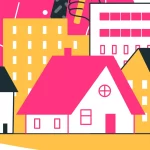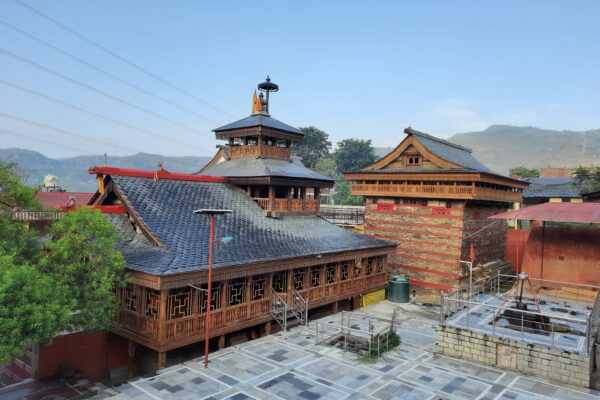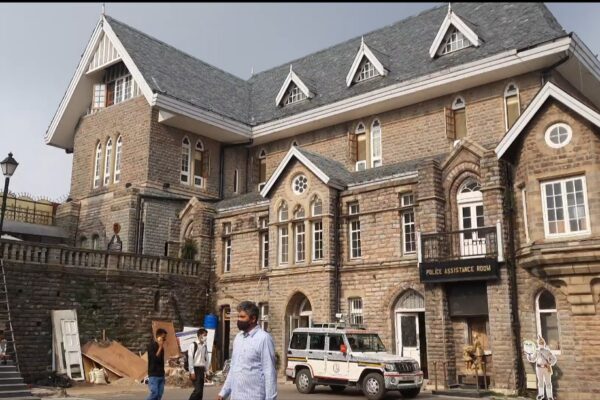Either I will come back after hoisting the tricolour, or I will come back wrapped in it,
but I will come back for sure. -Captain Vikram Batra
INTRODUCTION:
The National War Memorial in New Delhi stands as a poignant fusion of architectural elegance and design mastery, embodying the spirit of remembrance and honoring the sacrifices of India’s brave soldiers. In this blog, National War Memorial- Dawn of a New Era, we explore the intricate details of its architecture and design, unraveling the symbolism and creativity that make it a symbol of national pride. Read full blog to know further about National War Memorial- Dawn of a New Era

LOCATION:
National War Memorial is in the heart of New Delhi, the capital city of India. It is situated at the India Gate circle at eastern end of Rajpath, a ceremonial boulevard that runs from Rashtrapati Bhavan (the President’s residence) to India Gate. The memorial is easily accessible and closest prominent landmark, India Gate. Visitors can reach National War Memorial by various modes of transportation, and the surrounding is often frequented by both locals and tourists.
APPROACH:
National War Memorial is situated in the capital city of the country, so it has got numerous options and ways to approach the monument. Here are common approaches to India Gate:
- By Metro: The Delhi Metro is a convenient and popular mode of transportation in the city. The nearest metro station to India Gate is the Central Secretariat Metro Station. From there, visitors can take a short taxi ride or walk to India Gate.
- By Car: If you are traveling by car, India Gate is easily accessible by road. It is located on Rajpath, which is well-connected to different parts of the city. There are parking facilities available nearby.
- By Bus: Public buses are another option for reaching India Gate. Many buses routes pass through or near India Gate, making it accessible to those using public transportation.
- By Auto-rickshaw or Taxi: Auto-rickshaws and taxis are readily available in Delhi. Visitors can hire an auto-rickshaw or taxi to reach India Gate from various parts of the city.
- Walking: For those in the vicinity, especially in the central part of New Delhi, walking to India Gate is a viable option. The monument is a popular destination, and the surrounding area is pedestrian friendly.
- Tourist Buses: Tour operators in Delhi often include India Gate as part of city tours. Visitors can choose to take a guided tour or use tourist buses that cover major attractions, including India Gate.
- Cycling: Cycling has become a popular mode of transportation in Delhi, and some visitors may choose to cycle to India Gate, especially if they are exploring nearby areas.
- Ride-Sharing Apps: App-based ride-sharing services like Uber and Ola are widely available in Delhi. Visitors can use these services for a convenient and comfortable ride to India Gate.
TIMMINGS AND TICKETING:
National War Memorial is a public monument and park, the visiting hours are from 9:00 AM to 7:30 PM. The nearest monument, India Gate and its surroundings are open to the public 24 hours a day.
Furthermore, there is no entry fee or tickets required to visit National War Memorial. It is a free and open space for people to pay their respects, enjoy the surroundings, and take in the significance of the monument. Additionally, certain events or ceremonies take place at National War Memorial on special occasions, such as Republic Day, and these events may have specific schedules. Following are the events and activities that takes place on various week days and important ceremonial days:

ROUTINE ACTIVITIES:
- Retreat Drill just before sunset on daily basis
- Change of Guard Ceremony and band display before Retreat Drill every Sunday
- Band displays at Public Plaza on important occasions
- Public / Routine Visitors
- Organised visits by Scout & Guides, NCC Cadets, Schools, National Integration Tours, Colleges etc
CEREMONIAL FUNCTIONS:
- Republic Day, 26 Jan
- Independence Day, 15 Aug
- Kargil Diwas, 26 Jul
- Vijay Diwas16 Dec
- Army, Air Force & Navy Days
- On Visits of Senior Dignitaries
- On Regimental / Corps Days
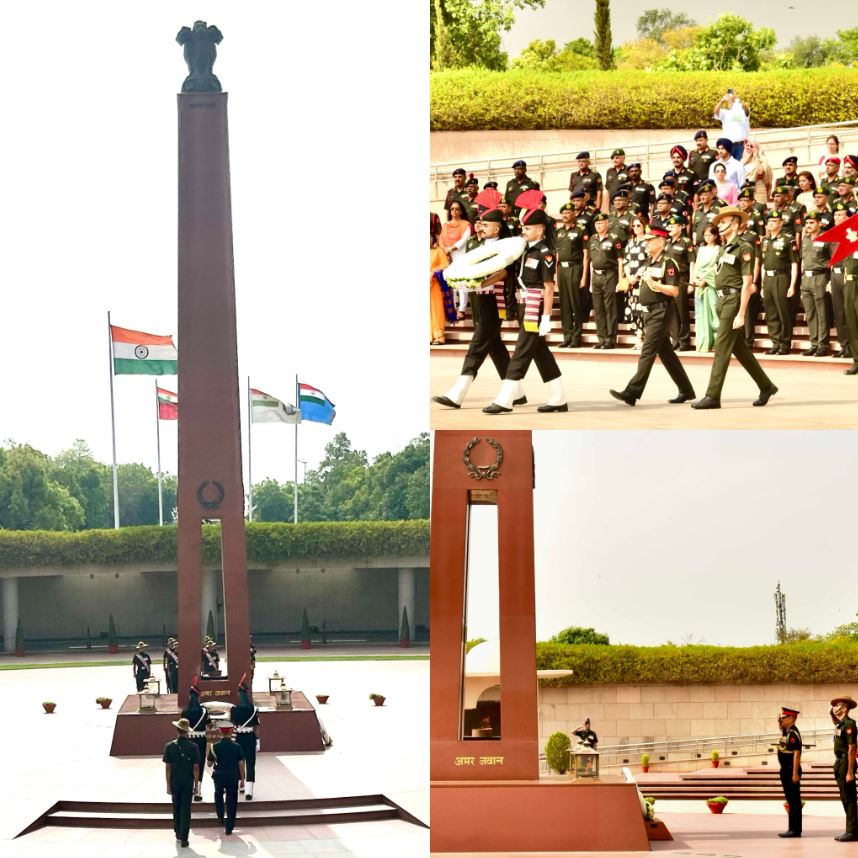

Picture Credits: https://nationalwarmemorial.gov.in/
HISTORY: National War Memorial- Dawn of a New Era
The iconic India Gate in Lutyen’s Delhi was constructed in 1931 by erstwhile British empire to commemorate the Battle Casualty (Fatal) of India during World War I as well as Third Anglo-Afghan War. It stands tall as a must visit monument for visitors in New Delhi. Out of over 83,000 Indians who laid down their lives, India Gate bears 13,516 names, etched all over the monument.
Amar Jawan Jyoti: Amar Jawan Jyoti (AJJ) is a special memorial. It has an upside-down bayonet with a helmet on top. This memorial was quietly set up overnight under the India Gate arch in January 1972. It was put there to remember India’s win in the India-Pakistan War in 1971 and to honor our brave soldiers who died. Later, when the National War Memorial was created, the Amar Jawan Jyoti joined with its eternal flame on January 21, 2022. Since then, important people, including those from other countries, have placed wreaths at AJJ on different occasions.

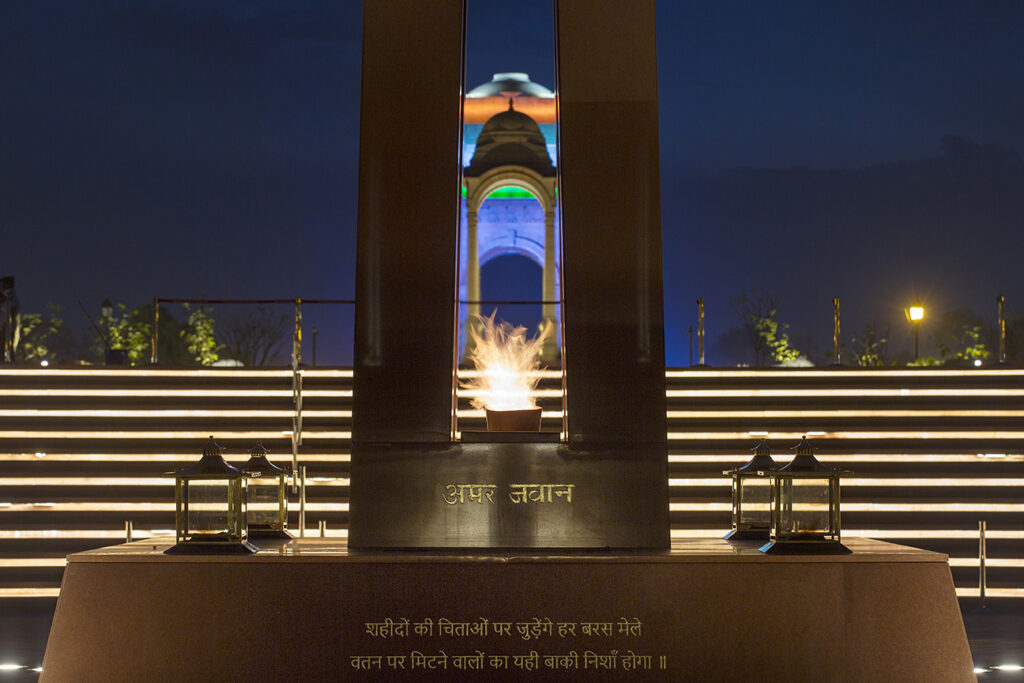
SIGNIFICANCE:
Since Independence, over 26,000 soldiers of the Indian Armed Forces have made the ultimate sacrifice in defense of the nation’s sovereignty and integrity. The National War Memorial stands as a testament to the nation’s gratitude towards its Armed Forces. This memorial aims to reinforce a sense of belonging, uphold high moral values, and instill feelings of sacrifice and national pride among our citizens. It serves as a lasting tribute to the sacrifices made by our soldiers in various conflicts, United Nations Operations, and Humanitarian Assistance and Disaster Response Operations since Independence.

A war memorial can take various forms such as a building, monument, statue, or edifice, designed to celebrate a war, victory, or honor those who lost their lives or were injured in war. It provides visitors with an opportunity to establish a conscious connection with the site and the people in whose memory the structure is erected. The memorial endeavors to evoke a profound and moving experience, acting as a symbol of inspiration for future generations.
DECISION TO CONSTRUCT NATIONAL WAR MEMORIAL:
The idea of building a National War Memorial had been discussed at the highest levels since 1961. In 2014, there was increased focus on this, and after careful consideration, the Union Cabinet gave the green light on October 7, 2015, for the construction of the National War Memorial & Museum (NWM&M) in the Lutyen’s zone of the National capital. To determine the best location for the Memorial, the existing ceremonial practices at India Gate and Amar Jawan Jyoti were taken into account. The area east of India Gate, around the canopy at ‘C’ Hexagon in New Delhi, was identified as the most suitable site for the Memorial.

Picture Credits:arch daily
CONTEXT AND DESIGN APPROACH:
The iconic India Gate attracts an average of 50,000 people every day. Situated within the bustling C Hexagon, the lawns surrounding it were preserved to serve as vibrant public spaces for activities like playing, meeting, relaxing, and more. This Capitol complex is organized around a central axis, the Rajpath, which is the ceremonial path extending from the President’s residence and culminating at the India Gate.
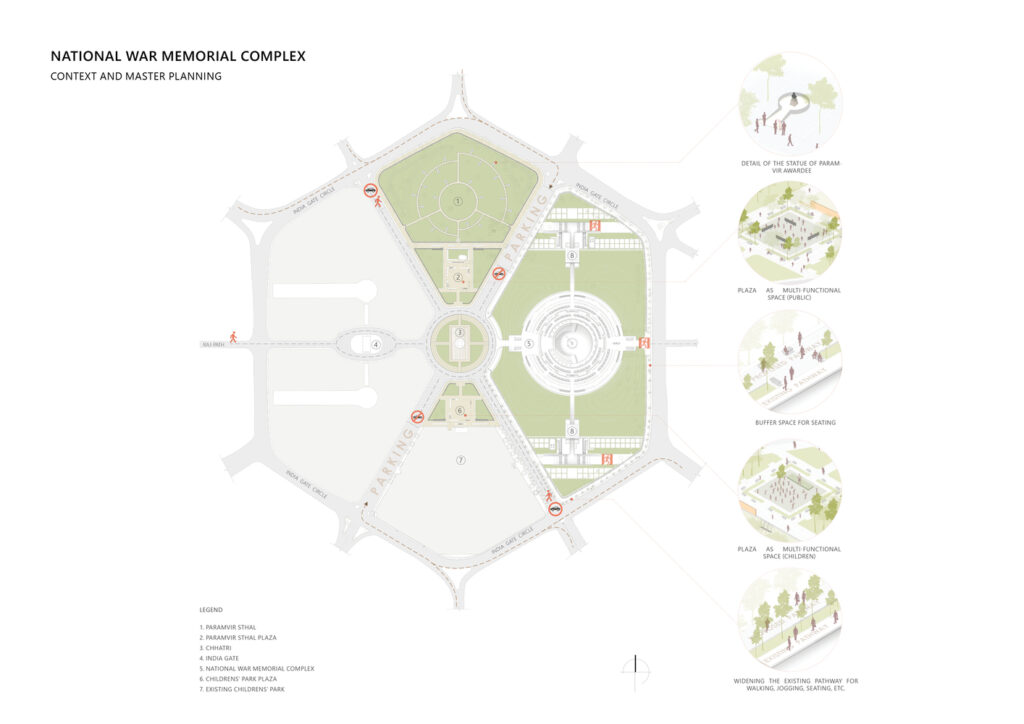
Picture credits: arch daily
The newly constructed National War Memorial (NWM) respects this axis and imparts a sense of hierarchical significance to the overall layout. At the heart of the memorial, a cross-connection is established: The Yudhpath, symbolically linking the Rajpath (Path of Life) with the Yudhpath (Path of War).
PROCESS OF CREATION:
In 2016-17, a two-stage global competition was organized to choose a fitting design for the National War Memorial. Out of 427 submissions Shri Yogesh Chandrasan of WeBe Design Lab in Chennai emerged as the winner of this global competition with his design and was appointed as the Project Consultant. After obtaining necessary approvals from relevant authorities and consulting with urban bodies in Delhi, a Detailed Project Report was prepared.
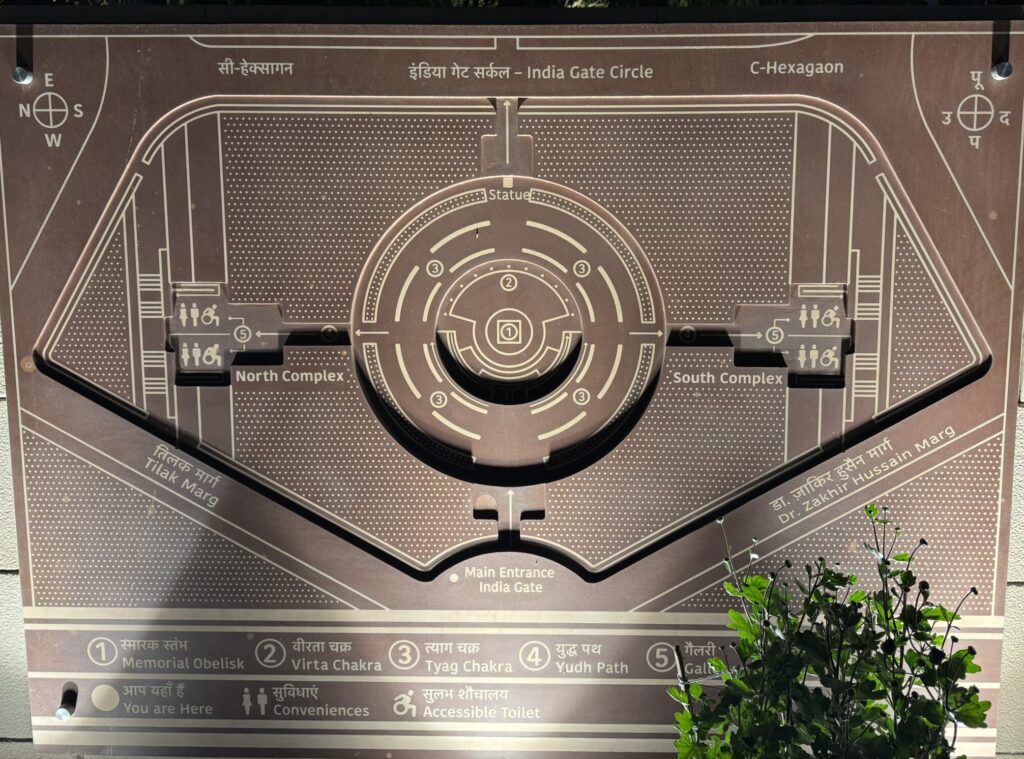
At a cost of around INR 176 crores, the Memorial was conceived and constructed within a timeframe of 20 months. On January 25, 2018, M/s NCC Ltd was awarded the contract for construction. The project was overseen by the Headquarters Integrated Defence Staff (HQ IDS) on behalf of the Ministry of Defence. The nation dedicated the monument to the Armed Forces of India on February 25, 2019, in a ceremony attended by the Hon’ble Prime Minister, Shri Narendra Modi.
CONCEPT: National War Memorial- Dawn of a New Era
The National War Memorial’s design is based on the “Chakravyuha,” an ancient circular combat formation that effectively traps the opponent. The architects developed a multi-layered experience of strolling among soldiers in a battle zone based on this idea. The memorial’s circular layout features five concentric rings made up of different parts. These rings represent many emotions and fulfil various purposes.
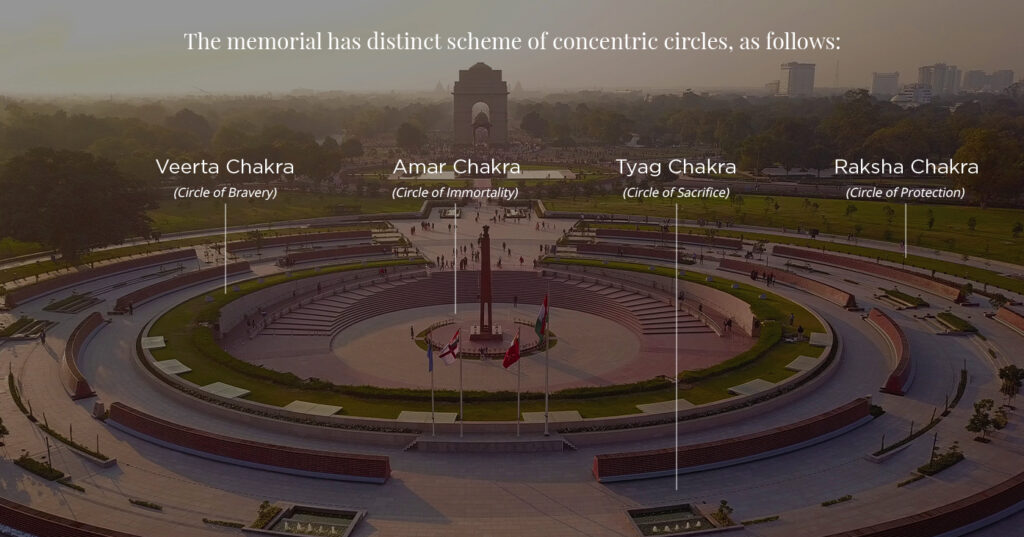
Picture credits: https://www.mygov.in/campaigns/national-war-memorial/
The design of the primary memorial symbolizes that the supreme sacrifice made by a soldier in the line of duty not only immortalizes them but also signifies that the spirit of a soldier endures eternally. The memorial features a distinctive arrangement of concentric circles which are also known as “Circles of Emotions”

Picture credits: arch daily
DESIGN LAYER ELEMENTS:
The design elements, represented by these four circles—namely, the Circle of Immorality (Amar Chakra), Circle of Bravery (Veer Chakra), Circle of Sacrifice (Tyag Chakra), and Circle of Protection (Raksha Chakra), along with the Path of War (Yudh Path) —are deeply personal expressions of the design team. They serve as a unique perspective on conveying ’emotion and design: establishing symbols and memories.’

Picture credits: arch daily
AMAR CHAKRA:
Circle of Immorality-The innermost layer. Ring of Eternal Remembrance. Here, a 15 meter high Obelisk stands proudly with an Eternal Flame. The flame serves as a poignant symbol of the enduring spirit of the fallen soldiers, assuring that the Nation will forever remember their sacrifices. The obelisk, cradling the eternal flame, signifies the everlasting nature of the Jawans, ensuring they live on in our memories. This poignant setting is nestled within a broader circular court, serving as a ceremonial space.
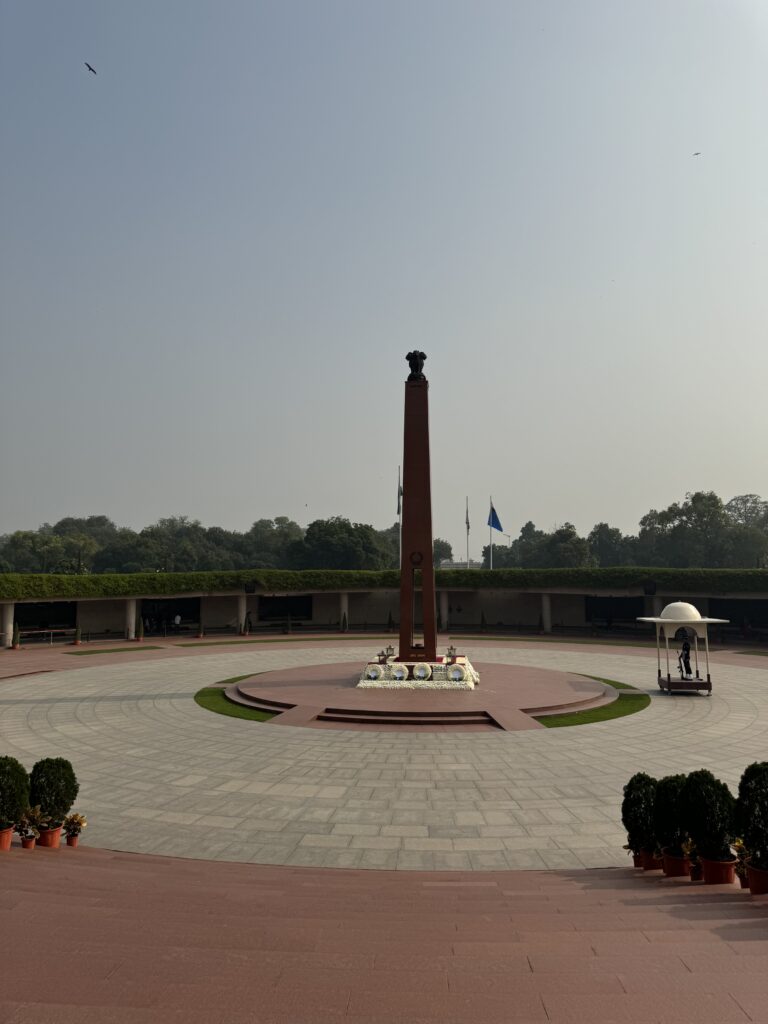

VEERTA CHAKRA:
Circle of Bravery. The circle showcases the valor of Indian forces through a covered gallery featuring six bronze murals illustrating courageous battle actions of the Indian Armed Forces. It includes a semi-open corridor and gallery narrating the heroic stories of notable historic battles from the Army, Navy, and Air Force in Indian history.

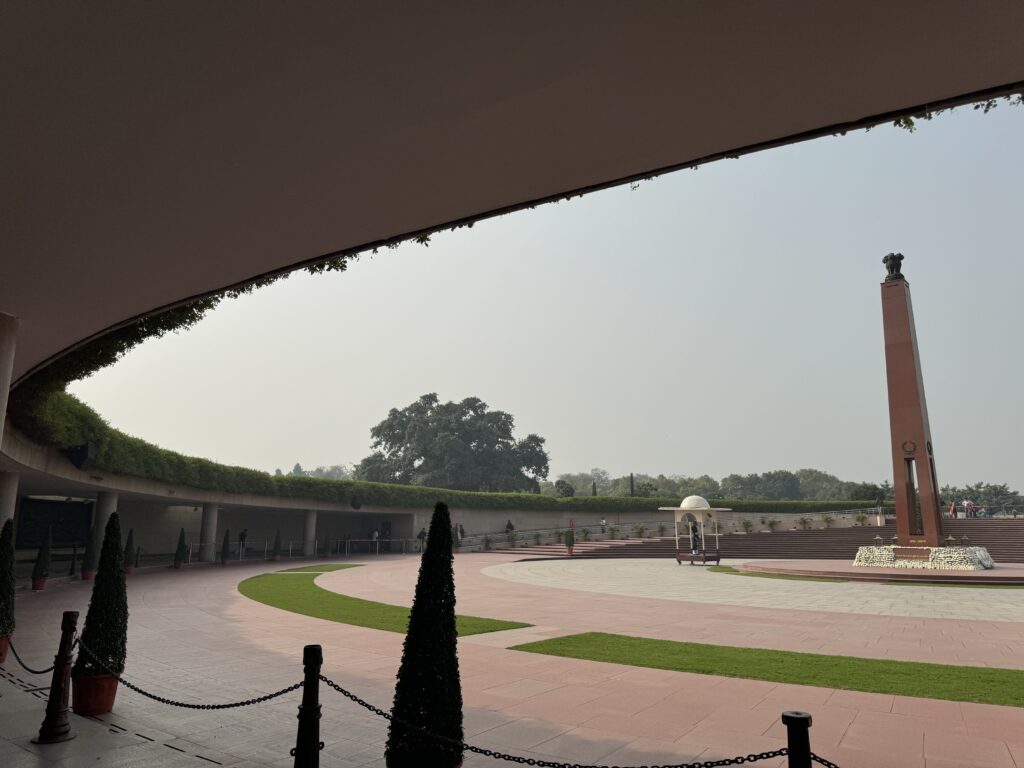
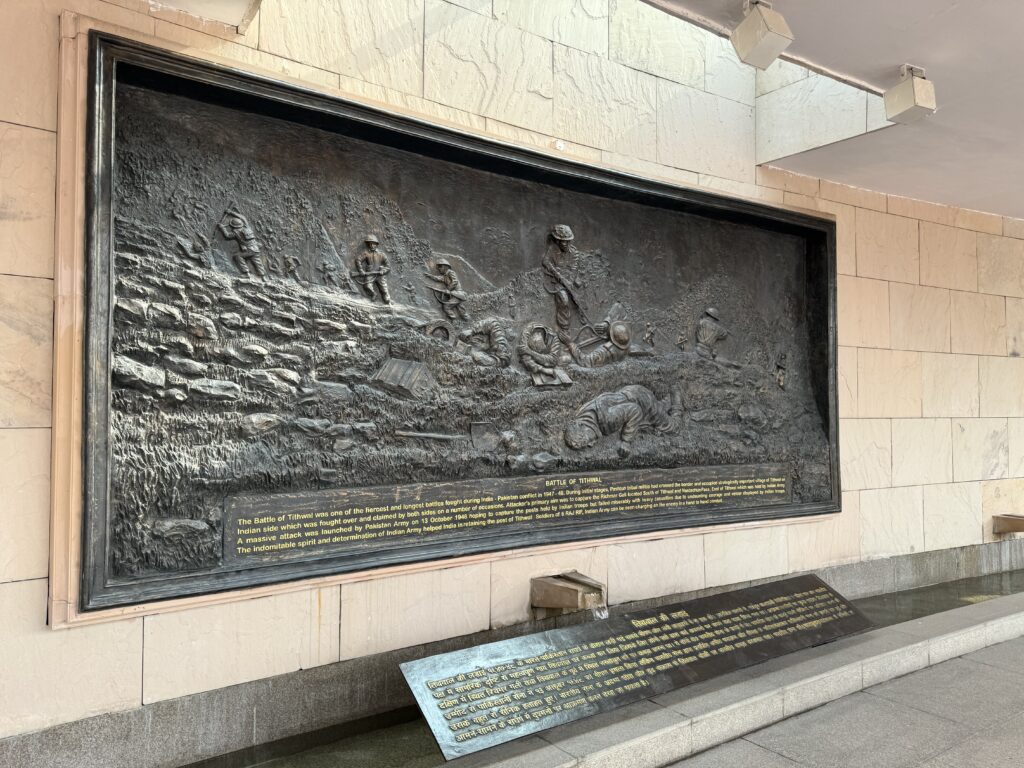
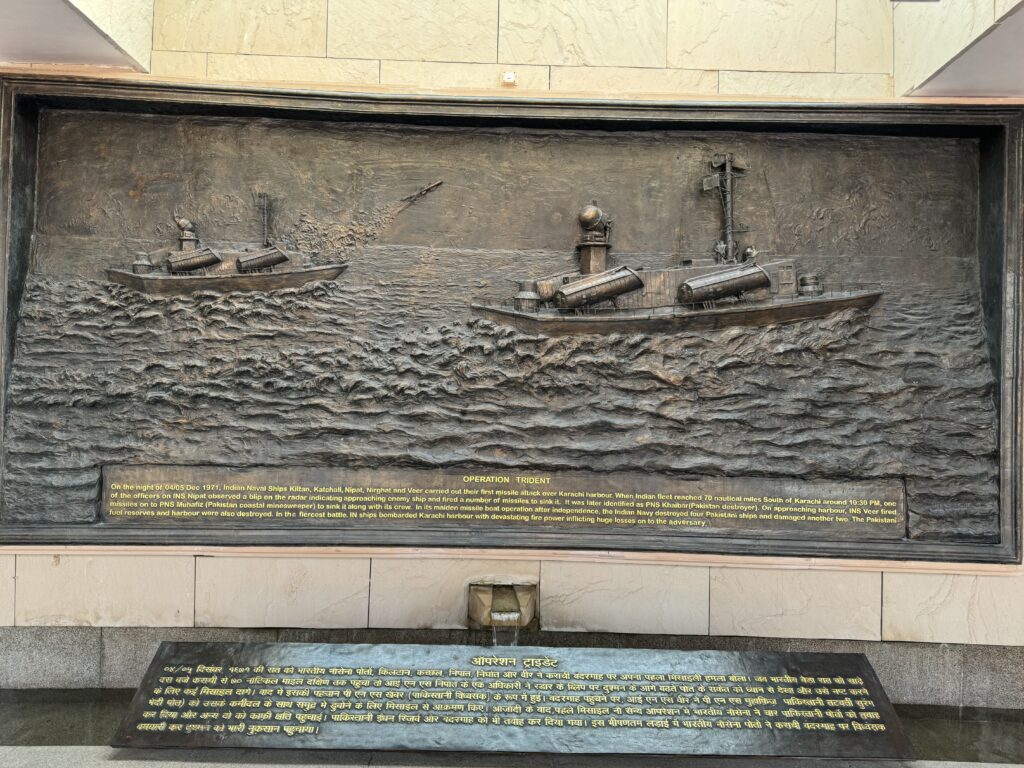
TYAG CHAKRA:
Circle of Sacrifice. The concentric circular walls of honor, representing the ancient war formation ‘Chakravyuh,’ make up the Circle of Sacrifice. These walls are adorned with granite tablets, and each tablet is dedicated to an individual soldier who has made the ultimate sacrifice. The name of each soldier is meticulously inscribed in golden letters. Modeled after the historic “Chakravyuha” war formation, the Tyag Chakra is organized in concentric circles, aligning with different wars and proudly displaying the names of 25,700 war heroes over 8 segments and of 2 walls each who gave their lives for the nation post-independence.

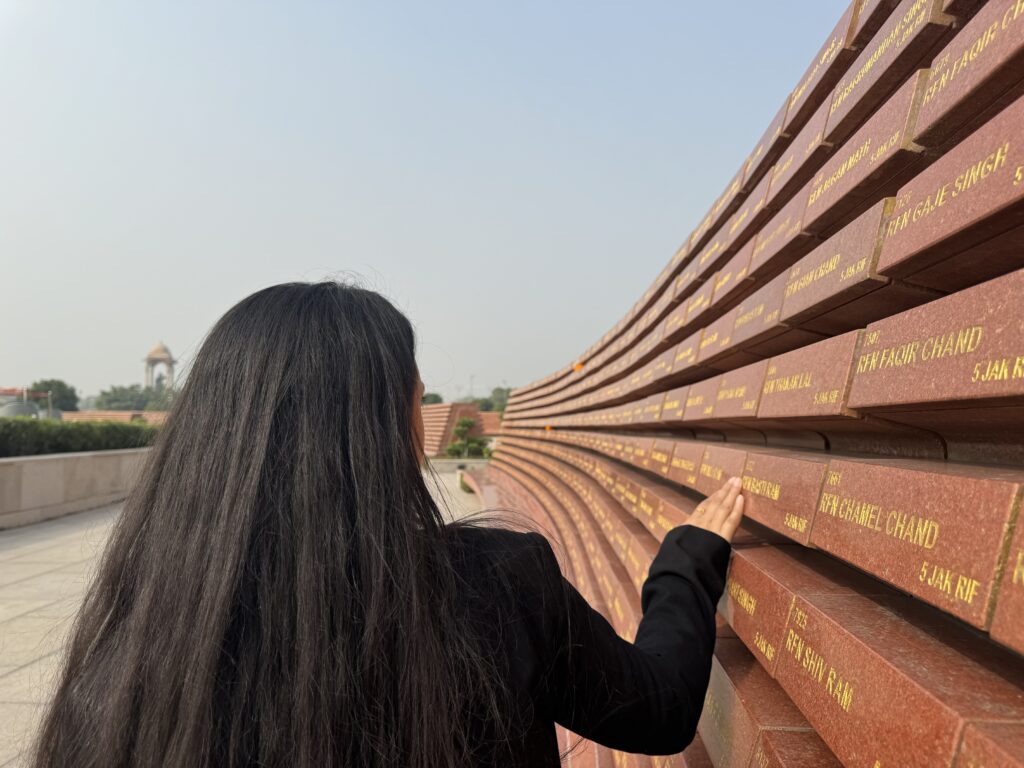
This concrete structure is built with interlocking granite blocks, where each block symbolizes a martyr, featuring their engraved name, rank, and number.

Picture credits: arch daily
RAKSHA CHAKRA:
Circle of Protection. In the Protection Circle, the outermost layer consists of rows of trees in the Raksha Chakra, serving as a comforting symbol to the citizens of the nation regarding their safety from potential threats. Each tree within this circle represents the dedicated soldiers who tirelessly maintain the territorial integrity of the nation around the clock. The arrangement of trees embodies the territorial line of control, representing the unseen soldiers who continue to safeguard us. With a total of 690 trees, this circle not only contributes to the visual screening of the bustling roads in the C Hexagon but also establishes a serene and secure space within the memorial.

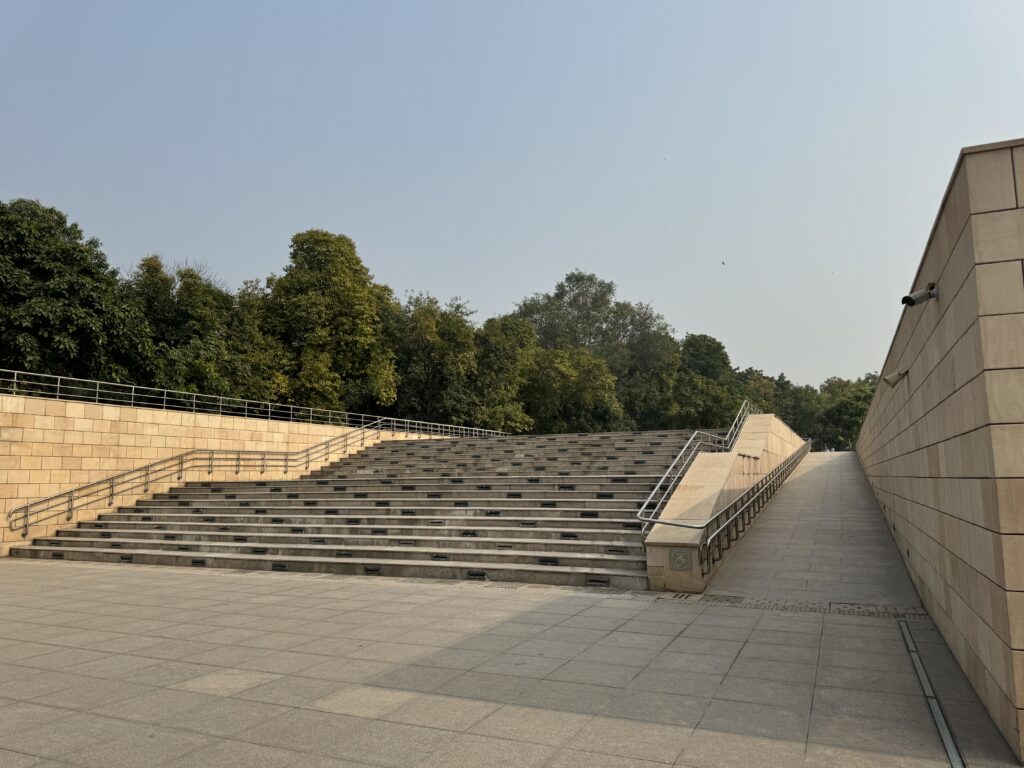
LIGHTING SCHEME:
The lighting scheme is intricately woven into the overall design of the National War Memorial, aiming to emphasize the details, materials, and colors throughout the entire landscape. It seamlessly integrates with the architecture, creating an immersive and evocative environment that enhances both the emotional and visual experience.
This lighting design serves as the catalyst that transforms the monumental landscape from day to night, particularly at sunset. It introduces a dynamic scheme that establishes a visual hierarchy by highlighting points of interest and accentuating different areas through carefully chosen lighting fixtures. The warm white light and the thoughtfully crafted lighting design work together to create a welcoming ambiance for visitors.
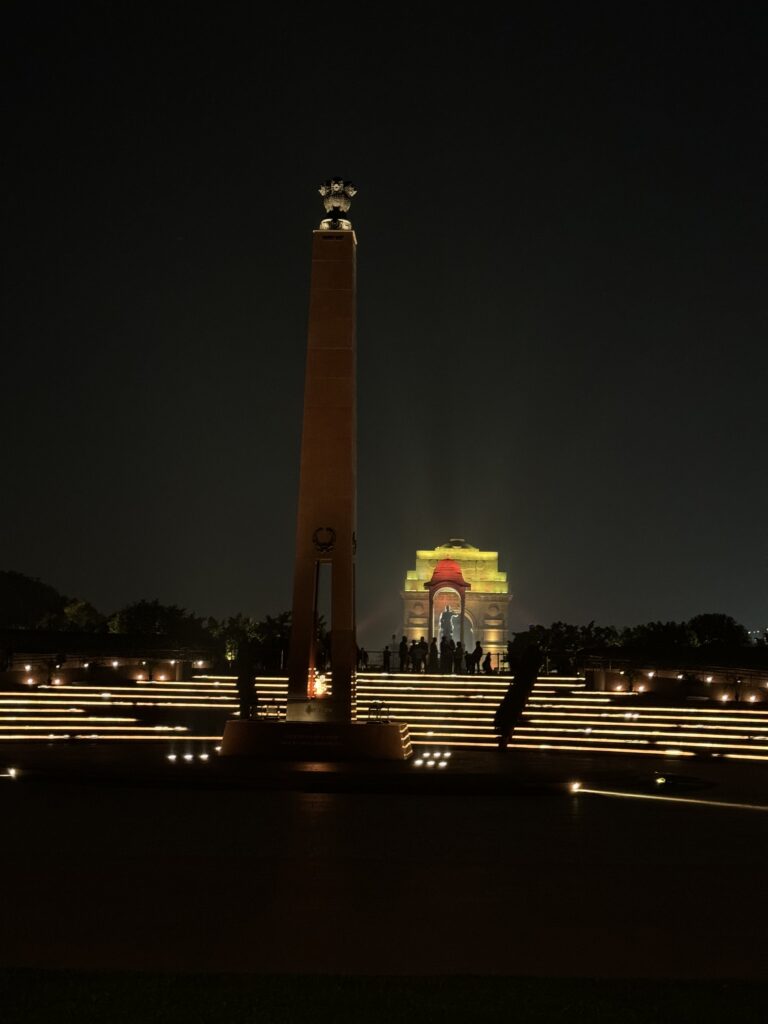

In the central court surrounding the eternal flame, the lighting extends sideways and upward, building a sense of eternity as it gradually fades. The Thyag Chakra appears to float with a series of small lights resembling the oil lamps traditionally lit in memory of loved ones in Indian homes. The streaks of light on the steps contribute to a sense of transition through the concentric setup. Notably, the project intentionally avoids ambient light. While the introduced light adds emphasis and character, the intentional darkness enhances the depth and absorption of the overall experience.
LAYERS OF LIGHTING DESIGN:
Sacrifice Circle (Tyag Chakra): The lighting is strategically positioned to illuminate the inscribed names of the soldiers, drawing attention to their supreme sacrifices.
Courage Circle (Veerta Chakra): This theme underscores the celebration of bravery and victory, using lighting to accentuate the spirit of valor.
Immortality Circle (Amar Chakra): A gentle glow and aura envelop the Obelisk and Eternal Flame, symbolizing purity and perpetuity.
Protection Circle (Raksha Chakra): The theme reflects strength and duality, employing lights to highlight the figures of ‘Rakshaks,’ symbolizing protectors.
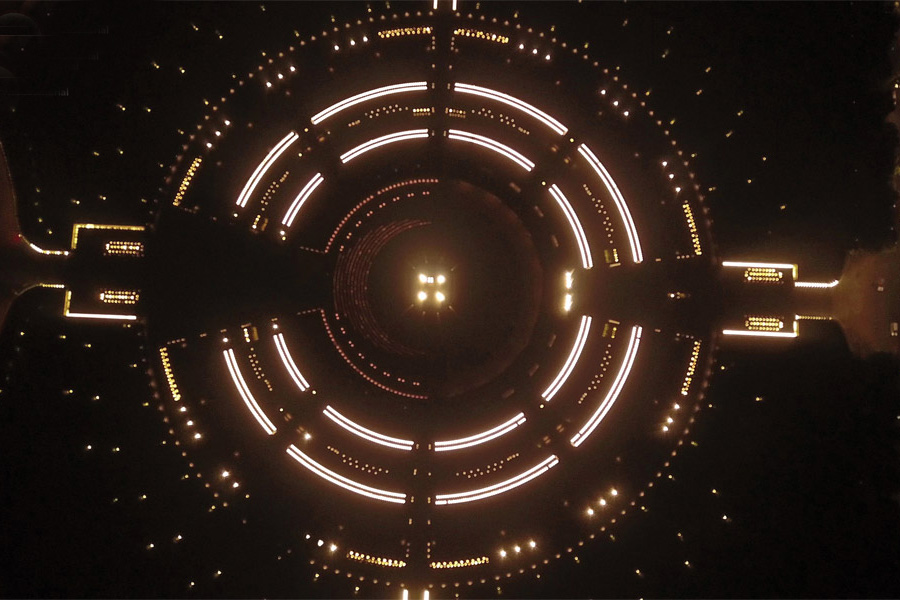

INTEGRATION WITH NATURE:
The architects of the National War Memorial demonstrated sensitivity to the surrounding environment. Preserving existing lawns and incorporating rows of trees in the Raksha Chakra, the memorial seamlessly integrates with the natural landscape. This harmonious blend of architecture and nature offers visitors a serene and contemplative space.
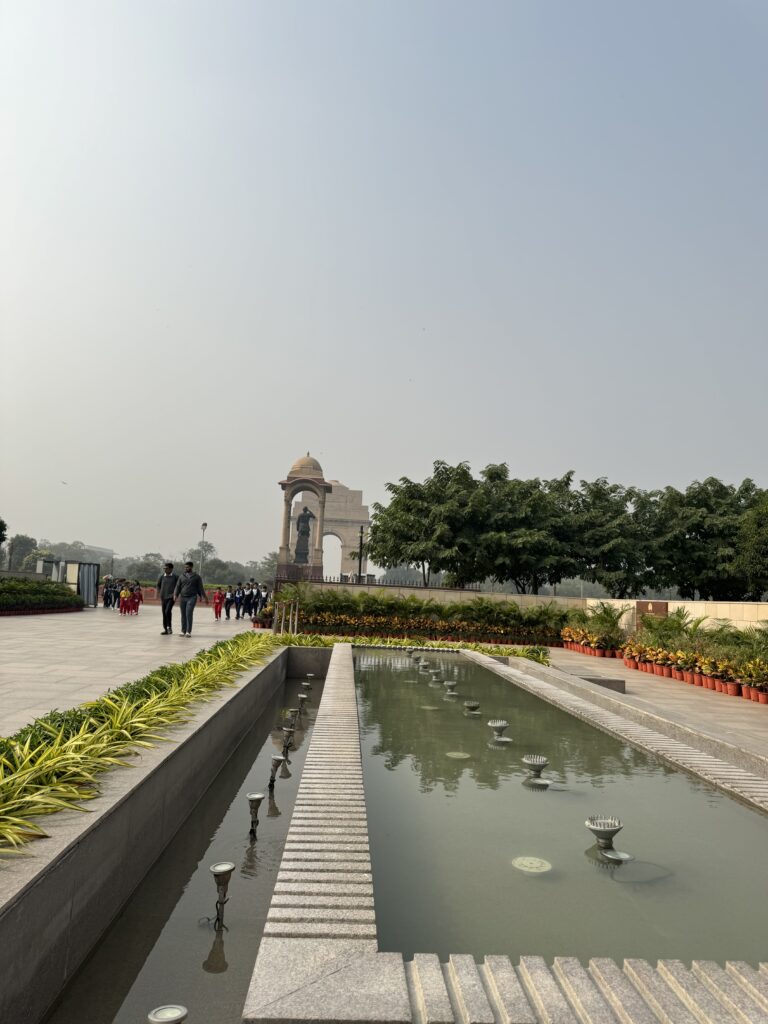

PRECISION IN MATERIALITY:
Beyond its symbolic circles, the National War Memorial boasts architectural precision in materiality. Self-interlocking granite blocks, each representing a martyr, form a sturdy and dignified structure. The choice of materials and their placement contribute to the monument’s robust yet poignant presence, showcasing the architects’ attention to detail and commitment to crafting a lasting tribute.

Picture credits: arch daily
GALLERY PLAZA: National War Memorial- Dawn of a New Era
The souvenir shop & washroom facility is available at the National War Memorial in Delhi is located in the Gallery Plaza area of the memorial. This shop offers a variety of memorabilia and souvenirs for visitors who wish to take home a piece of their experience at this significant monument.
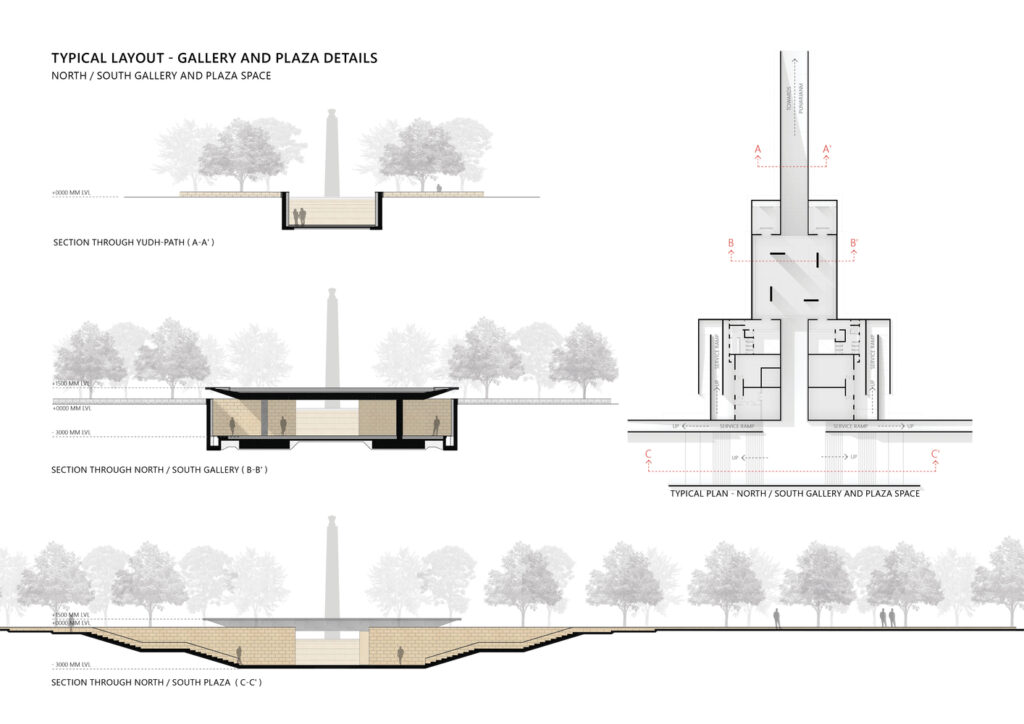
Picture credits: arch daily
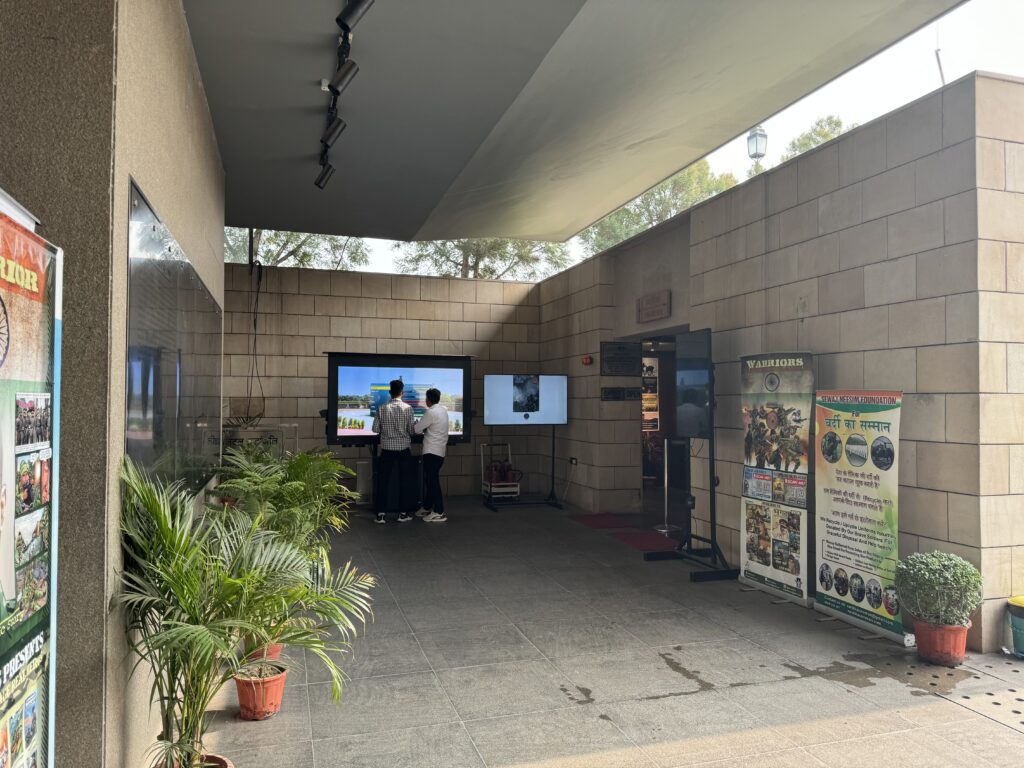

CONCLUSION:
The National War Memorial stands as a testament to the harmonious marriage of architecture and design, creating a space that transcends its physical form. Its symbolism, integration with the landscape, play of light, precision in materiality, and the emotional depth it evokes make it not only a stunning architectural marvel but a profound tribute to the valor and sacrifice of the nation’s heroes.
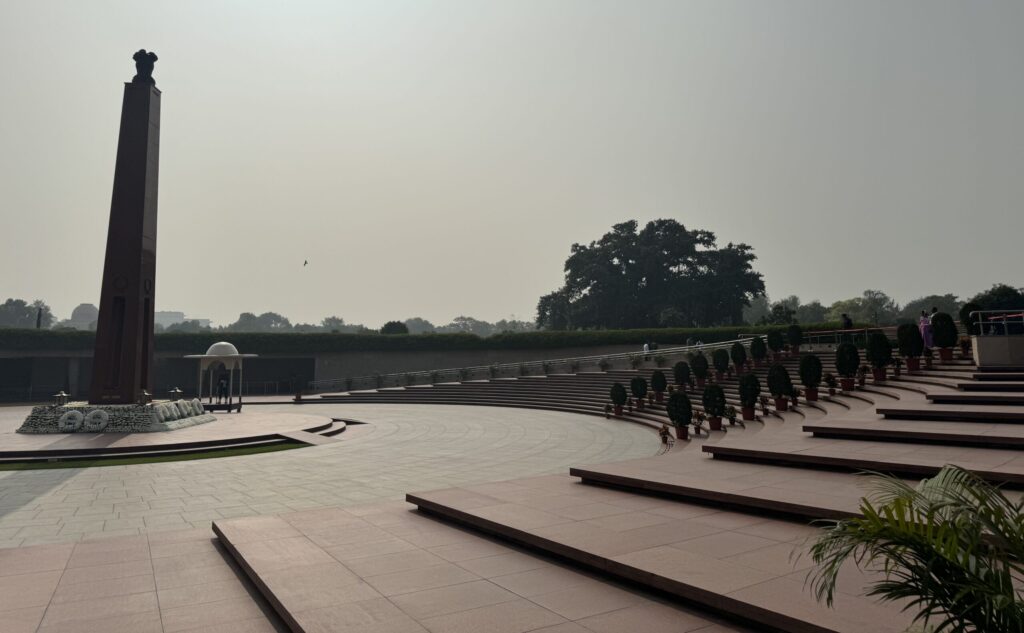
I hope you liked this blog, National War Memorial- Dawn of a New Era, please let me know through your comments. Also share it with other people who are passionate about architecture and design. Contact us in case of any queries and also read my previous blogs related to architecture and travel. Thank you.

